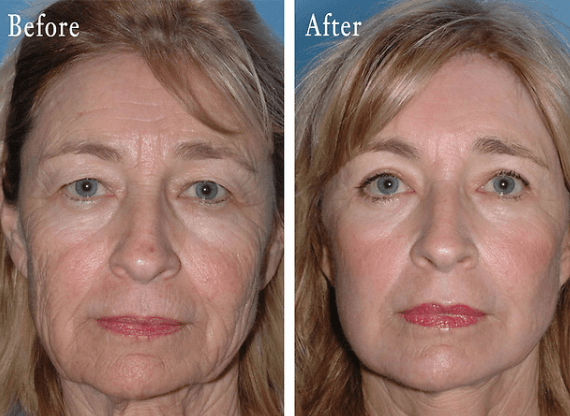Forehead lift surgery
The effects of aging are inevitable and often the brow and forehead area show the first signs. The skin begins to lose its elasticity. Sun, wind and the pull of gravity all affect the face, resulting in frown lines, forehead wrinkles and increased brow weight. Even people in their thirties can have faces that look older than their years. Your tired, angry or sad expression may not reflect how you really feel. As a result, many people have opted for a procedure known as a forehead lift. Based on variations in the way men and women age and new advances in medical technology, different methods are used to perform this procedure.
If you’re wondering how a forehead lift could improve your appearance, you need to know how these procedures are performed and what to expect. This brochure can address many of your concerns and provide you with the information you need to begin considering forehead surgery.
Successful facial plastic surgery is the result of a good relationship between patient and surgeon. Trust, based on realistic expectations and demanding medical experience, is developed in the preoperative counseling stages. Your surgeon can answer specific questions about your specific needs.
Is the forehead lift for you?
As with all elective surgeries, good health and realistic expectations are prerequisites. When a surgeon tightens loose skin and removes excess, forehead wrinkles and drooping eyebrows are modified. The procedure is called a forehead lift or brow lift. If necessary, the surgeon removes part of the muscle that causes vertical frown lines between the eyebrows. The result can be a softer brow and a more youthful expression. To see what a brow lift can do for your face, place your hands above your eyebrows and outside the corners of your eyes and gently lift the skin upwards. A forehead lift is an option if you have a sagging brow or deep furrows between the eyes. This procedure is usually done between the ages of forty and sixty-five, although it may be necessary at a younger age.
Incisions can be placed at the hairline, behind the hairline, or in some cases, above the forehead or in the middle of the forehead. Your surgeon can help you choose the best technique for your particular situation.
Making the decision for a forehead lift
Whether you are having surgery for functional or cosmetic reasons, choosing a qualified facial plastic surgeon is of the utmost importance. During the consultation, the surgeon will look at your facial structure, skin condition and hairline to decide where the incisions should be made. A detailed medical history will be taken so your surgeon can consider any medical conditions that may increase surgical risks. A detailed description of the procedure will also include a discussion of risk.
After the decision to proceed with surgery is made, the surgeon will describe the technique indicated, the type of anesthesia, the surgical setup, any additional surgery, as well as the risks and costs.
Understanding surgery
The main difference between the various forehead lift options is the placement of the incision.
The initial technique is the coronal incision, which is done slightly behind the natural hairline. An alternative is a prehairline incision. This is similar to a coronal incision except that the middle part of the incision is made directly at the hairline. This incision generally heals favorably and has the advantage of lowering the hairline. The downside could be noticeable scars. One option is to place the incision within the mid-forehead folds. This is mainly used on men with deep pre-existing forehead lines.
The most recent approach is endoscopic surgery. Several small half-inch to one-inch incisions are placed just behind the hairline. Although this technique may require more surgery time, it is less invasive and results in less chance of temporary scalp numbness.
This process takes one to two hours to perform. It is most often performed under intravenous sedation or twilight anesthesia.
What to expect after surgery
You will experience a certain amount of swelling and bruising in the 10-day period following surgery. In some patients, this condition may involve the cheek and eye area as well as the forehead. You will be advised to keep your head elevated to reduce swelling. Cold compresses may further reduce swelling. As the incisions heal, you may experience some numbness as well as itching, both of which will decrease over time. Stitches are usually removed within seven to 10 days after surgery. If bandages have been used, they are removed in one to three days. It is important to follow your surgeon’s advice on resuming normal activities. For most patients, recovery time will not exceed two weeks, but patients may be advised to avoid strenuous activities for longer periods. Any lingering bruising can be camouflaged with standard makeup techniques.
Not infrequently, a brow lift is combined with blepharoplasty (blepharoplasty) or a facelift to provide a harmonious rejuvenation.
Facial plastic surgery makes it possible to correct many facial defects and signs of premature aging that can undermine self-confidence. By changing the way you look, cosmetic surgery can help you change how you feel about yourself.
Insurance does not generally cover surgeries that are purely for cosmetic reasons. Surgery to correct or improve sagging foreheads and eyebrows that affect vision can be fully or partially reimbursed. It is the patient’s responsibility to contact the insurance carrier for information regarding the degree of coverage.
© Copyright 2017 American Academy of Facial and Reconstructive Plastic Surgery


